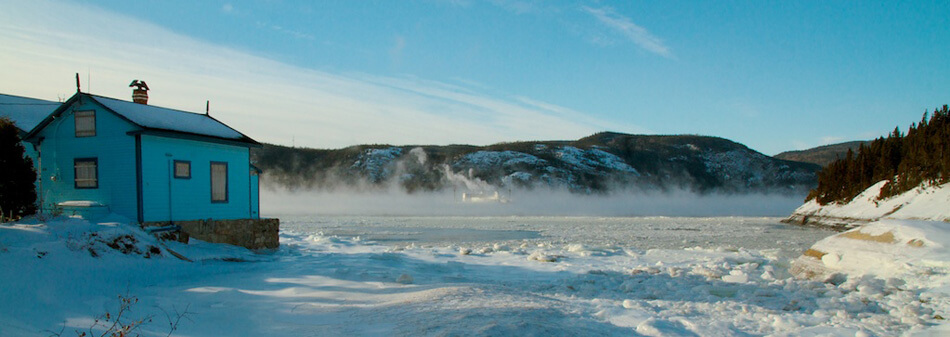In summer, the Bleuvet and BpJAM ply the waters of the St. Lawrence and the Saguenay Fjord to study the various cetaceans of the region. In mid-autumn, once the boats have been taken out of the water, team members continue their work on land. What happens in winter at GREMM’s offices in Québec City and Tadoussac?
Since 1985, a beluga photo-identification project has been carried out to study the links between the species’ social organization and its use of habitats. Behind her computer screen in the Québec City office, Marie-Hélène D’Arcy identifies individuals from amongst the 12,500 photos taken in the summer of 2016. It’s a daunting task: since belugas are pure white in adulthood and only have a subtle dorsal crest, we must rely on scars and other markings to differentiate individuals. With over 15 years of experience, Marie-Hélène recognizes the belugas of the St. Lawrence better than any computer program.
Based on Marie-Hélène’s identifications, Mélissa Tremblay may inform sponsors of the Adopt a Beluga program that their “protégés” have been observed. Additionally, Mélissa creates maps from observation data to better understand the movement of cetaceans in the St. Lawrence. She also assists Robert Michaud, GREMM President and Scientific Director, in his work.
After spending his summers collecting beluga data, Tim Perrero passes winters in Tadoussac processing photos of large rorquals that interns have taken from whale-watching boats. To better handle the thousands of photographs taken since 1983, a new standardized database has been created by GREMM’s lead technician Michel Moisan.
In addition to being an expert in IT, programming and the conceptualization of the GREMM’s data processing tools, Michel ensures that all equipment needed for the summer of 2017 is ready for deployment. New tags have recently been ordered that record sound, measure speed and indicate GPS position. The anticipated results will give new depth to the data!
Dissemination of knowledge
On Whales Online, publications are increasing by the day. The editorial team – made up of Marie-Ève Muller, Béatrice Riché, Marie-Sophie Giroux and Josiane Cabana – answers questions from the public, prepares in-depth dossiers and publishes the preliminary results of ongoing research.
The GREMM is also responsible for the Marine Mammal Interpretation Centre (CIMM) in Tadoussac. Lead Naturalist Marie-Sophie Giroux takes advantage of the CIMM’s off-season to prepare new tools for the other naturalists and to update the exhibition. She also creates new trainings for the Eco-Whale Alliance with the help of Patrice Corbeil, GREMM Vice President and Director of Educational Programs.
From the top floor of the CIMM, Patrice authors reports and prepares applications for funding. In addition to a breathtaking view of the Fjord from his office, he also enjoys an overview of the various GREMM dossiers and, together with his long-time partner Robert Michaud, spearheads new projects where research and education come together to fulfil the organization’s mission.
Collaborations
At the GREMM, research is not conducted in a bubble. The Research Group meets with colleagues and potential partners to pursue ongoing projects or develop new undertakings. Splitting his time between Québec City and Tadoussac, Scientific Director Robert Michaud fields questions from the media, meets with fellow researchers across the country and interprets data processed by his team.
Marine Mammal Emergencies
The Quebec Marine Mammal Emergency Response Network continues to receive reports in winter, although not as many. When she’s not busy handling an emergency, call centre manager Josiane Cabana trains volunteers, develops new tools to optimize case handling for future calls, engages with the management committee to coordinate partner requests, and compiles and processes data with the support of database manager Tim Perrero and with Mélissa Tremblay.





